Collaboration and Networking in Cultural Heritage
This unique opportunity will provide selected students with a valuable interdisciplinary experience abroad as well as networking opportunities with cultural heritage scientists who are leaders in their fields. Each student will have dedicated American and Dutch mentors. In late spring, prior to the summer exchange abroad, the IRES students will participate in a one day pre-departure preparation workshop virtually with all collaborators. Selected students in the vicinity of the US scientific coordinators’ research institutions may elect to spend one or more weeks there.
U.S. Scientific Coordinators and Collaborators
Dr. Marc Walton, Northwestern University (marc.walton@northwestern.edu)
 Marc Walton is the Senior Scientist at the Northwestern University/Art Institute of Chicago Center for Scientific Studies in the Arts (NU-ACCESS), the first non-degree-granting fine arts Museum/Academic center in the nation that is multidisciplinary in nature. As the PI of this IRES program, Dr. Walton holds primary responsibility for its administration. His research interests focus primarily on trade and manufacture of ancient objects, and on the development of the use of imaging techniques in the field of Conservation Science.
Marc Walton is the Senior Scientist at the Northwestern University/Art Institute of Chicago Center for Scientific Studies in the Arts (NU-ACCESS), the first non-degree-granting fine arts Museum/Academic center in the nation that is multidisciplinary in nature. As the PI of this IRES program, Dr. Walton holds primary responsibility for its administration. His research interests focus primarily on trade and manufacture of ancient objects, and on the development of the use of imaging techniques in the field of Conservation Science.
Dr. Francesca Casadio, Art Institute of Chicago (fcasad@artic.edu)
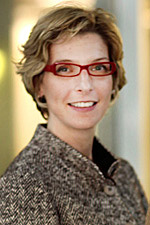 Francesca Casadio is the Head of Conservation Science at the Art Institute of Chicago and co-director of the Northwestern University/ Art Institute of Chicago Center for Scientific Studies in the Arts (NU-ACCESS). She already has existing collaborations with Dutch scientists in the areas of colorant identification with Surface Enhanced Raman Scattering (SERS) and the study of modern oil paints. As a co-PI of the IRES program, Dr. Casadio will mentor the IRES students whose research will be centered in these areas.
Francesca Casadio is the Head of Conservation Science at the Art Institute of Chicago and co-director of the Northwestern University/ Art Institute of Chicago Center for Scientific Studies in the Arts (NU-ACCESS). She already has existing collaborations with Dutch scientists in the areas of colorant identification with Surface Enhanced Raman Scattering (SERS) and the study of modern oil paints. As a co-PI of the IRES program, Dr. Casadio will mentor the IRES students whose research will be centered in these areas.
Prof. Kenneth Shull, Northwestern University (k-shull@northwestern.edu)
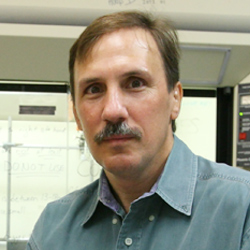 Kenneth Shull is a Professor of Materials Science and Engineering at Northwestern University. He has been collaborating with the Art Institute of Chicago for several years on the development of novel rheological methods based on Quartz Crystal Microbalance resonators (QCM) to study artist’s paints. As a co-PI of the IRES program, Prof. Shull, in coordination with the graduate students of his group, will mentor the IRES students undertaking research focusing on the chemical changes and related rheological behavior in paint systems.
Kenneth Shull is a Professor of Materials Science and Engineering at Northwestern University. He has been collaborating with the Art Institute of Chicago for several years on the development of novel rheological methods based on Quartz Crystal Microbalance resonators (QCM) to study artist’s paints. As a co-PI of the IRES program, Prof. Shull, in coordination with the graduate students of his group, will mentor the IRES students undertaking research focusing on the chemical changes and related rheological behavior in paint systems.
Dr. John Delaney, National Gallery of Art, DC (J-Delaney@NGA.gov)
 John Delaney is the Senior Imaging Scientist at the National Gallery of Art, Washington, DC where his research focuses on the development and application of remote sensing imaging methods for the study of the works of arts. His involvement in the projects will be an excellent opportunity for the IRES students to benefit from his experience to develop their competences in imaging technologies, not only in the cultural heritage science field but also in the sensing and security business as well.
John Delaney is the Senior Imaging Scientist at the National Gallery of Art, Washington, DC where his research focuses on the development and application of remote sensing imaging methods for the study of the works of arts. His involvement in the projects will be an excellent opportunity for the IRES students to benefit from his experience to develop their competences in imaging technologies, not only in the cultural heritage science field but also in the sensing and security business as well.
Dr. Marco Leona, Metropolitan Museum of Art (Marco.Leona@metmuseum.org)
 Marco Leona is the David H. Koch Scientist in charge of the Department of Scientific Research at The Metropolitan Museum of Art, New York. The IRES students will be able to benefit from his broad experience, especially in SERS for the identification of organic colorants in work of arts, to successfully undertake their research projects.
Marco Leona is the David H. Koch Scientist in charge of the Department of Scientific Research at The Metropolitan Museum of Art, New York. The IRES students will be able to benefit from his broad experience, especially in SERS for the identification of organic colorants in work of arts, to successfully undertake their research projects.
Prof. John Lombardi, City University, New York (lombardi@sci.ccny.cuny.edu)
 John Lombardi is a Professor in the Department of Chemistry at the City College of New York. For almost ten years, he has been collaborating with Dr. Marco Leona on the application of SERS in the fields of art and forensic science. Prof. Lombardi’s experience places him in a favorable position to participate in the mentoring of the IRES students working on projects focused on identification of molecular compounds through microanalysis.
John Lombardi is a Professor in the Department of Chemistry at the City College of New York. For almost ten years, he has been collaborating with Dr. Marco Leona on the application of SERS in the fields of art and forensic science. Prof. Lombardi’s experience places him in a favorable position to participate in the mentoring of the IRES students working on projects focused on identification of molecular compounds through microanalysis.
Dr. Jennifer Mass, Winterthur Museum (jmass@udel.edu)
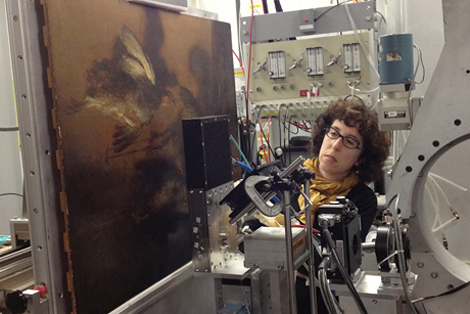 Jennifer Mass is the Senior Scientist at Winterthur Museum’s Scientific Research and Analysis Laboratory and Adjunct Professor in the Winterthur/University of Delaware M.S. Program in Art Conservation. Currently her work focuses on mechanistic studies on the photo-degradation of cadmium sulfide and arsenic sulfide pigments, most recently with Katrien Keune from the University of Amsterdam. This ongoing collaboration with Dutch colleagues combined with Dr. Mass’s long track record of teaching and mentoring an interdisciplinary range of students will make her incredibly well suited to prepare and mentor the IRES students in this program.
Jennifer Mass is the Senior Scientist at Winterthur Museum’s Scientific Research and Analysis Laboratory and Adjunct Professor in the Winterthur/University of Delaware M.S. Program in Art Conservation. Currently her work focuses on mechanistic studies on the photo-degradation of cadmium sulfide and arsenic sulfide pigments, most recently with Katrien Keune from the University of Amsterdam. This ongoing collaboration with Dutch colleagues combined with Dr. Mass’s long track record of teaching and mentoring an interdisciplinary range of students will make her incredibly well suited to prepare and mentor the IRES students in this program.
Dutch Scientific Coordinators
Dr. Robert van Langh, Rijksmuseum (R.van.Langh@rijksmuseum.nl)
 Robert van Langh is the Head of Conservation and Scientific Research at the Rijksmuseum in Amsterdam. He is the main coordinator of the consortium of Dutch scientists gravitating around the “Atelier Building” core. Dr. van Langh will be responsible for providing the final mentor/student matching appropriately designed in function of the selected IRES students profile and interests.
Robert van Langh is the Head of Conservation and Scientific Research at the Rijksmuseum in Amsterdam. He is the main coordinator of the consortium of Dutch scientists gravitating around the “Atelier Building” core. Dr. van Langh will be responsible for providing the final mentor/student matching appropriately designed in function of the selected IRES students profile and interests.
Dr. Katrien Keune, Rijksmuseum (K.Keune@rijksmuseum.nl)
 Katrien Keune is a paintings research scientist at the Van ‘t Hoff Institute for Molecular Sciences, University of Amsterdam (HIMS, UvA) and the faculty Mechanical, Maritime and Material Engineering (3ME), TUDelft. She is the project leader of the multidisciplinary research project Paint Alteration in Time (PAinT), aiming to adress fundamental questions on the chemistries and reactivities of mature oil paints in collaboration with many partners from the museum, industrial and academic fields. Dr. Keune and her research collaborators at the UvA will supervise two IRES students every summer in the areas of developping microanalytical tools and change and reactivity.
Katrien Keune is a paintings research scientist at the Van ‘t Hoff Institute for Molecular Sciences, University of Amsterdam (HIMS, UvA) and the faculty Mechanical, Maritime and Material Engineering (3ME), TUDelft. She is the project leader of the multidisciplinary research project Paint Alteration in Time (PAinT), aiming to adress fundamental questions on the chemistries and reactivities of mature oil paints in collaboration with many partners from the museum, industrial and academic fields. Dr. Keune and her research collaborators at the UvA will supervise two IRES students every summer in the areas of developping microanalytical tools and change and reactivity.
Prof. Joris Dik, TU Delft (j.dik@tudelft.nl)
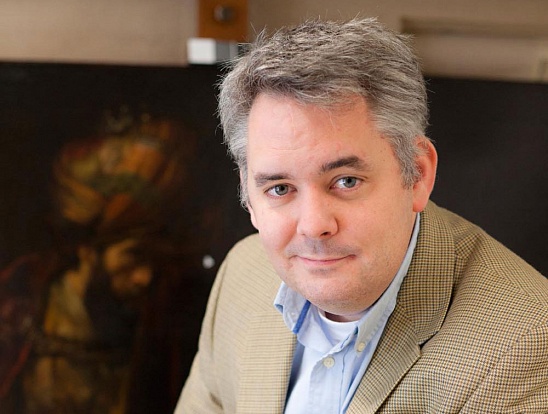 Joris Dik is the J. Antoni van Leeuwenhoek Professor of History of Arts and Architecture, Materials Technology, and Materials in Art and Archaeology at the Technische Universiteit Delf (TUDelft), leader in the development of large area mapping diagnostic techniques such as macro-X-Ray Fluorescence (macro-XRF) and macro-X-Ray Diffraction (macro-XRD) scanning probes. Prof. Dik’s long tradition of integrating material evidences into art historical scholarships will make him an exciting mentor for the IRES students, while his established joint research agenda with Dr. Delaney for the “Revisualizing late Rembrandt: Developing and Applying New Imaging Techniques” program will ensure a smooth and efficient integration of the IRES students and their projects in the portfolio of this multdisciplinary group.
Joris Dik is the J. Antoni van Leeuwenhoek Professor of History of Arts and Architecture, Materials Technology, and Materials in Art and Archaeology at the Technische Universiteit Delf (TUDelft), leader in the development of large area mapping diagnostic techniques such as macro-X-Ray Fluorescence (macro-XRF) and macro-X-Ray Diffraction (macro-XRD) scanning probes. Prof. Dik’s long tradition of integrating material evidences into art historical scholarships will make him an exciting mentor for the IRES students, while his established joint research agenda with Dr. Delaney for the “Revisualizing late Rembrandt: Developing and Applying New Imaging Techniques” program will ensure a smooth and efficient integration of the IRES students and their projects in the portfolio of this multdisciplinary group.
Dr. Alessa Gambardella, Rijksmuseum (A.Gambardella@rijksmuseum.nl)
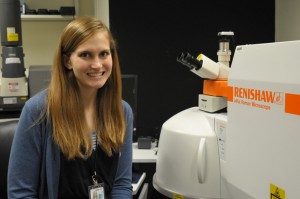 Alessa Gambardella is a postdoctoral fellow at the Rijksmuseum, Amsterdam where her research focuses on lapis lazuli investigating its provenance as well as its deterioration in oil paint. She will play a pivotal role as the student coordinator for the IRES program where she would be providing general mentorship and guidance to students before and during their research experience abroad.
Alessa Gambardella is a postdoctoral fellow at the Rijksmuseum, Amsterdam where her research focuses on lapis lazuli investigating its provenance as well as its deterioration in oil paint. She will play a pivotal role as the student coordinator for the IRES program where she would be providing general mentorship and guidance to students before and during their research experience abroad.